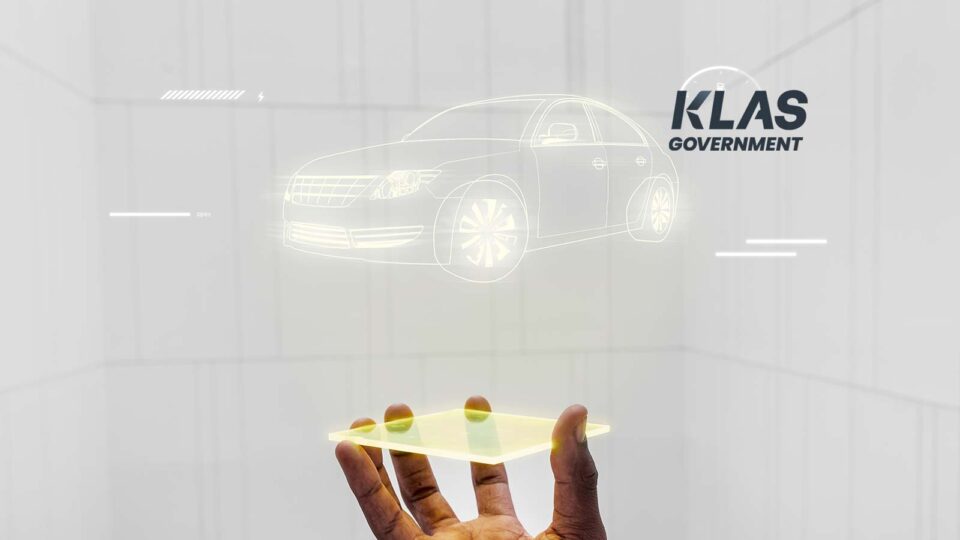Breakthrough Power Chassis Meets Standardized a-Kit / Vehicle Envelope (Save) Specifications for Tactical Comms’ Size, Weight and Power (Swap) On Military Vehicle ‘Radio Shelf’
Klas Government, which makes the world’s most powerful, low-SWaP technology for the extreme tactical edge, announced the availability of Voyager 6 – a breakthrough versatile chassis enabling DoD to seamlessly integrate C5ISR tactical communications systems into military ground vehicles without requiring modifications to the vehicle. Voyager 6 also meets Standardized A-Kit / Vehicle Envelope (SAVE) specifications, creating a significant reduction in time and costs required to integrate the solution into existing and future military vehicles that support the SINCGARS MT-6352 mounting tray.
Recommended ITech News: Cambridge Mechatronics Launches (CML) Best in Class Driver ICs for Shape Memory Alloy Applications
AI/ML, IoT, and other cloud-enabled battlefield applications at the tactical edge face three significant challenges: First, these applications require massive processing power and data center connectivity not readily available at the edge. Second, even if more compute power is available, military vehicles (manned and unmanned) have a fixed and finite amount of shelf space for tactical communications equipment. And third, delivering all of these capabilities into vehicles that are in some cases decades old requires well thought out power management and delivery for the high-performance technology.
Voyager 6 addresses these challenges by extending processing and analytical power to edge environments – in turn exponentially increasing the tactical comms capabilities that can go into the space, and what troops can get out of it. At the same time, it essentially operates as a standardized envelope for innovation that seamlessly integrates into military vehicles.
“With Voyager 6, troops now have access to a tactical comms package that meets SAVE specifications for Size, Weight and Power (SWaP) — unlocking unlimited compute in a limited vehicle footprint,” said Chris Ericksen, Chief Revenue Officer, Klas Government. “Klas remains focused on delivering technology at the speed of battle, and Voyager 6 makes vehicle modernization possible without the need for costly, time-consuming modifications.”
Recommended ITech News: WiteSand Emerges From Stealth to Consolidate Siloed On-Prem Networking Tools into a Unified Cloud-Delivered Service
Voyager is a modular and scalable range of network, compute and radio systems modules designed with a common form factor which allows users to repurpose existing Voyager modules and chassis with the ability to easily incorporate new capabilities as the mission dictates. Key Voyager 6 Components can include but are not limited to:
- Voyager Tactical Cloud Platform (TCP), which brings the immense analytical power of the cloud to soldiers and battlefield vehicles operating in tactical edge environments – and at a small form factor not previously possible. TCP fits in a Voyager 6, which is SAVE compliant, and in turn fits in any US military vehicle with a MT-6352 space.
- VoyagerGPU, which utilizes NVIDIA GPU technology for AI/ML and video processing at the edge of the network.
- VoyagerSW26G, which leverages the ruggedized, embeddable Cisco ESS 3300 to connect PCs and VoIP phones to your network at 1Gbps providing a ten-fold increase in performance.
- VoyagerVM 3.0, which is based around Intel’s Xeon D architecture and is designed to provide the maximum performance, allowing applications built for the datacenter to migrate to the edge of the network. It is the only compute platform that works in the desert heat (50ºC).
- TRX R2, which combines connectivity and local compute so users on the move have cloud connectivity when they need it, but local processing power for analytics when there is no backhaul.
- Radio Brackets, which support a wide range of radios, allowing for a diverse ecosystem of radio partners to bring their capabilities and integrate them into the cloud platform allowing for enhanced communications for the entire AOR.
SAVE paves the way for open standards, as U.S. Army progresses in making C4ISR/Electronic Warfare Modular Open Suite of Standards (CMOSS) available. CMOSS converges select Army warfighting capabilities — such as mission command, movement and maneuver, and fires — into one system, versus the current method of integrating a multitude of separate capability “boxes” into vehicles.
Ericksen adds, “Klas is already working with CMOSS partners to fit the open systems architecture into the SAVE envelope, and our DoD customers can for the first time, bring the immense power of the cloud to enable AI, analytics and other applications into the field. And by wrapping in our Tactical Cloud Platform, commanders have access to applications and data at the edge, even when disconnected.”
Recommended ITech News: Taoglas Strengthens its IoT Managed Services Offering with Acquisition of Smartsensor Technologies


